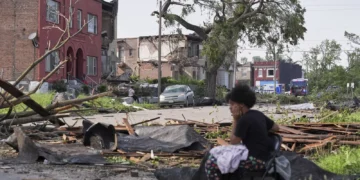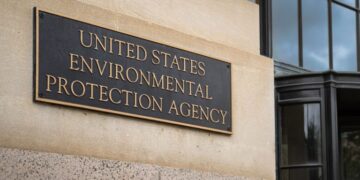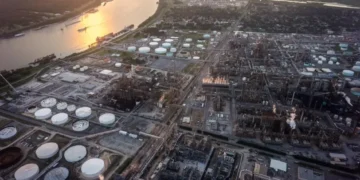Jan 30, 2025 Story by: Editor
Mere hours after his inauguration, President Donald Trump withdrew the United States from the Paris Climate Agreement, fulfilling a key campaign promise. This move was part of a broader set of executive actions aimed at steering the country away from the Biden administration’s policies. Trump argued that remaining in the agreement would hurt the economic interests of Americans. However, the accord was positioned to strengthen long-term economic stability, particularly in housing—an essential yet costly aspect of consumers’ lives—by making it more resilient and energy-efficient.
A September 2024 poll by Data for Progress found that 76% of Americans consider housing affordability a growing issue. This aligns with the reality that, over the past two decades, housing demand in the U.S. has significantly outpaced supply, driving costs up much faster than incomes. Climate change has exacerbated this crisis, affecting not just the availability and cost of housing but also its location and quality.
This issue is particularly pronounced in Black communities, where housing costs have become increasingly difficult to manage. On average, Black Americans spend more on housing than any other racial group but are still more likely to experience housing instability. This contributes to their disproportionate representation among the nation’s unhoused population. Additionally, Black homebuyers often pay more for comparable homes than white buyers. Climate change further intensifies these disparities, as Black individuals are 40% more likely than other racial groups to reside in areas projected to experience the most extreme temperature-related deaths, according to an Environmental Protection Agency (EPA) study.
A key factor driving these inequities is the U.S. finance industry. Historically, financial institutions have devised increasingly complex ways to exploit racial biases for profit. One of the most infamous examples is redlining, a discriminatory practice from the 1930s to the late 1980s in which banks and mortgage lenders systematically denied loans to racial minorities—primarily Black applicants—by labeling them as high-risk or non-creditworthy.
Even when Black buyers were not outright rejected, they were often offered loans for properties in undesirable locations, such as low-lying, flood-prone areas, sites near pollution-heavy highways or industrial zones, or land with poor soil conditions that led to structurally weak housing. This legacy has resulted in generations of Black communities living in less safe and less valuable areas. Today, climate change is further exposing these vulnerabilities.
Compared to white communities, Black populations are more likely to reside in “heat islands,” urban areas dominated by heat-absorbing infrastructure like buildings and concrete with little tree cover, making them more susceptible to extreme heat. They also face a greater likelihood of living in flood-prone regions. However, when it comes to climate adaptation efforts—such as flood management, expanding green spaces, and improving energy efficiency—Black communities remain at a disadvantage due to persistent disinvestment and governmental neglect.
These disparities are being further exacerbated by a modern iteration of redlining known as “bluelining.” This emerging practice involves property insurers adjusting their policies to mitigate climate-related financial risks by raising insurance costs or withdrawing coverage from communities most affected by climate change. Because of the legacy of redlining, these at-risk areas are predominantly nonwhite.
The impact of bluelining was evident during the 2025 Los Angeles wildfires. In California, wildfires have long been a devastating consequence of climate change. In addition to their physical destruction, wildfires contribute to soaring housing and insurance costs, particularly in Southern California and the Bay Area. According to an analysis by the U.S. Congress Joint Economic Committee’s Democratic majority, wildfires cost the U.S. up to $893 billion annually, largely due to real estate devaluation.
Amid these challenges, major insurers such as Allstate, Nationwide, and Travelers have adjusted their policies in states like California, quietly redrawing coverage maps to minimize their exposure to wildfire risks. As a result, customers increasingly find themselves with inadequate or stripped-down coverage, a trend that mirrors disparities seen in the healthcare industry. Some insurers have even withdrawn from certain markets altogether, creating “home insurance deserts.”
A 2023 poll found that four in ten Californians were considering leaving the state, citing the high cost of living as a primary factor. Black Californians have been particularly affected, with the state’s Black population decreasing from 2.2 million in 2000 to approximately 2.1 million today. Cost concerns in California—and across the country—have become increasingly linked to environmental risks. A 2018 study analyzing thousands of census tracts found that Black, Hispanic, and Indigenous communities face up to 50% greater wildfire susceptibility than majority-white areas.
Even beyond heightened climate risks, Black communities face steeper barriers to recovery. Following natural disasters, insurance payouts in Black communities tend to be lower and more delayed than those in white communities. A stark example is Altadena, a historically Black middle-class neighborhood in California that was devastated by wildfires. Residents there are now bracing for rising insurance costs and potential climate-induced gentrification. Similar patterns have played out in cities like New Orleans, Houston, and Puerto Rico, where Black and brown communities have struggled with slow and insufficient recovery efforts after environmental disasters.
A 2018 study further highlighted the racial disparities in disaster recovery, revealing that while white households often gain wealth after a disaster, Black households tend to lose wealth. The reason? White homeowners typically receive more aid and sometimes even assistance exceeding their property’s actual value.
The destruction caused by extreme weather events not only results in costly home repairs but also disrupts essential infrastructure, crippling local businesses, transportation networks, and healthcare access in minority communities. These compounded obstacles make recovery even more difficult.
Ultimately, while natural disasters like the LA wildfires may appear to affect all racial groups equally, the ability to recover is highly racialized. Whether viewed figuratively or literally, it is clear that racial minorities are bearing the greatest burden of climate change. Source: TIME

















